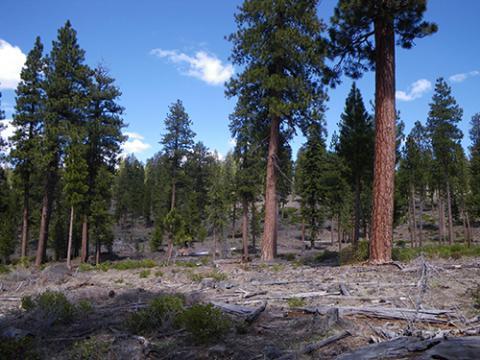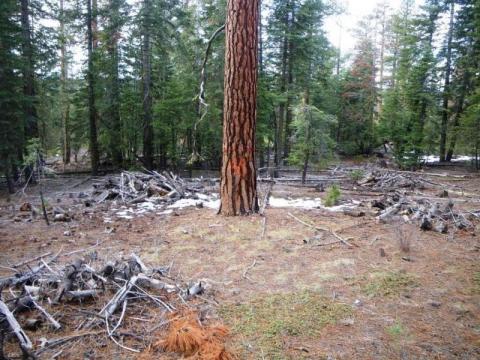Radial thinning is designed to reduce mortality and improve vigor of old trees while still maintaining high forest cover at the stand level. Radial thinning removes trees in a “doughnut” around focal trees, leaving areas in between these trees relatively intact. The idea behind this treatment is to try to save old trees from a variety of threats – fire, insects, drought – but still keep the forest dense for wildlife habitat or aesthetics. We examined 15-year growth response of old ponderosa pine and Jeffrey pines in California to radial and stand thinning treatments compared to an untreated (control) area. Ten of the 150 trees died during the 15 years of post-treatment monitoring: 4 in the control, 5 in the radial thinning, and 1 in the stand thinning. Tree growth in the stand thinning increased immediately following treatment and was sustained over the 15 years. In contrast, radial thinning did not increase growth, but slowed decline compared to control trees. Our results show that large, old trees can respond to restoration thinning treatments, but that the response depends on thinning type. Stand thinning must be sufficiently intensive to improve old tree growth, in part due to increasing available soil moisture. Thinning around the immediate neighborhood of legacy trees was insufficient to elicit a growth response, calling into question treatments attempts to increase vigor of legacy trees while still maintaining closed canopies in dry, coniferous forest types that evolved with frequent, low-intensity fire.
Key Findings:
-
Old ponderosa and Jeffrey pine trees are capable of increased growth rates after stand-level thinning, but removing trees 9.1 m around legacy trees (i.e., radial thinning) is insufficient to increase growth.
-
Radial thinning can stabilize growth trends in old trees, while untreated old trees will likely decline in vigor without intervention.
-
Attempts to increase vigor of large, legacy ponderosa and Jeffrey trees while still maintaining closed canopies in dry, coniferous forest types by reducing stand density only around the immediate neighborhood of legacy trees will likely be unsuccessful if the radius is not >9.1 m.

